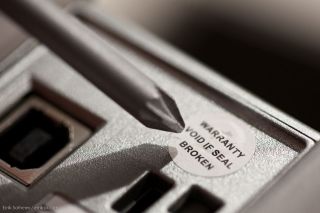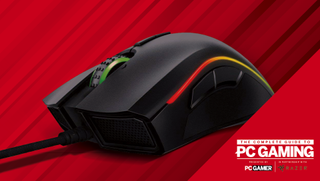Should I buy a warranty for my PC components?
Save time or save money?


PC Gamer is going back to the basics with a series of guides, how-tos, and deep dives into PC gaming's core concepts that we're calling The Complete Guide to PC Gaming. There's much more to come, and it's all being made possible by Razer, which stepped up to support this months-long project. Thanks, Razer!
Building a gaming PC can be a pretty big investment, with some configurations costing as much as a used car. Your PC needs to function for years, so it’s beneficial to protect that investment—even more so if you’re building on a budget.
All reputable manufacturers warranty their products from defects for a period of time, but what qualifies as a “defect” can vary with every product. Hardware producers add all sorts of disclaimers in their warranties that could potentially void any claim and leave you with an expensive repair. Retailers like Newegg, offer additional coverage that can be more convenient than the manufacturer’s, but it comes at a price. This service can be worth paying for when buying any computer component as long as you adjust your expectations accordingly. There are a lot of misconceptions about what retailer warranties cover and how they stack up against factory warranties.
Manufacturers vs retailers
Let me lay down a typical RMA—return merchandise authorization—scenario for you. You are several hours into an intense gaming session and suddenly your GPU’s fan stops working and your card begins to overheat. You see that the fan is still connected and determine that your card needs to be repaired or replaced. What happens if you have to rely on the factory warranty?
You submit an RMA claim with the manufacturer and are told when and where you need to ship your broken video card. You may even have to pay for the shipping costs, and you certainly won’t have a replacement product shipped to you beforehand. You are now stuck without a gaming PC while you wait for the manufacturer to receive your GPU, determine the cause of the dead fan, and ship a replacement (as long as it’s defective). Depending on your platform, you might not even have an integrated GPU to fall back on while you wait, either leaving you without a functioning PC, or leaving you with the additional cost of a temporary dedicated card.
This same scenario would be a lot less painful with the addition of a retailer warranty. Since you are paying out of pocket, third party coverage typically offers a lot more flexibility with when and where your product is repaired or replaced. When you put through a claim, you will often have the option to have your component repaired at a local facility. If no local facility is available, or the product can’t be repaired, then the guarantor deals with the logistics and pays the shipping costs. Some retailers may even send out a replacement before they receive the defective item, drastically reducing down time.
While both manufacturers and retailers will offer to repair your product or replace it with an identical product, Newegg’s third party coverage also provides the option to receive a full refund under certain circumstances.
What's not covered
Third party warranties offer convenience that manufacturers can’t match, but the restrictions on what kind of damage is covered are largely unchanged. Let’s take a look at what is not covered under Newegg’s warranty:
The biggest gaming news, reviews and hardware deals
Keep up to date with the most important stories and the best deals, as picked by the PC Gamer team.
- Any fault in the product that existed when delivered
- Accidental damage
- Damage from misuse, negligence, loss, or theft
- Consumables such as batteries, toner, paper, fuses, etc.
- Faults caused by using software or equipment not approved for use with the product by the manufacturer
It’s a common misconception that by paying for a warranty you are protecting your parts from damages that fall outside of the manufacturer’s warranty. While Newegg’s terms are certainly less long-winded than the novel that most manufacturer’s post on their websites, they still clearly exclude any damage that isn’t caused by a defective product. They also exclude any damage that existed at the time of delivery, so if your video card or CPU is DOA, you will still need to go through the manufacturer’s RMA process. This also means that you can’t use a third party warranty to get around the fact that motherboard manufacturers typically refuse to accept claims for boards that shipped with bent pins.
When you pay for a third party warranty you are paying for convenience. If we look at a product like the Ryzen Threadripper 1900x CPU, AMD offers a 3 year factory warranty. Newegg, meanwhile, offers a 3 year warranty for $40 and a 4 year warranty for $60. For $40 dollars you get a more convenient replacement process and for an extra $20 dollars you gain an additional year of protection from defects. With Intel also offering a 3 year warranty on their processors, the benefits of a retailer warranty are pretty obvious when it comes to CPUs. With other products, such as EVGA’s well received SuperNOVA series PSUs, the benefits are less clear. EVGA extended the warranty of these power supplies to 12 years; this means that even the best warranty from Newegg is only ⅓ the length of the factory warranty. The value of a retailer warranty is going to vary based on the type of product, the quality of the factory warranty, and how much you value your time.
Most Popular

